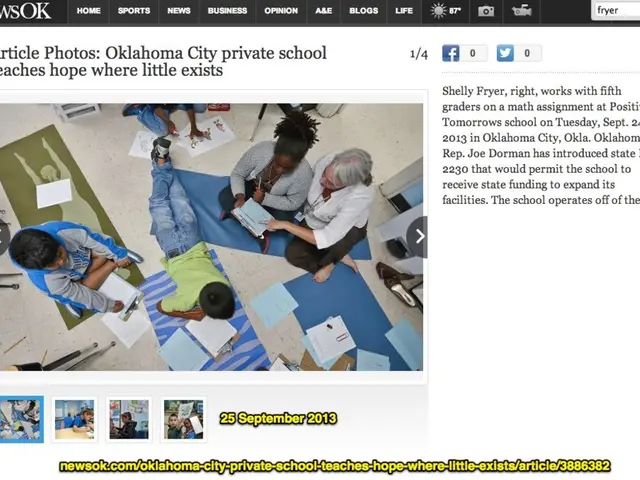Still Feeling the Strain: Online Conferences Continue to Cause Stress, Five Years After the Pandemic
Digital gatherings can bring significant stress levels for numerous individuals - Virtual gatherings continue to leave numerous participants feeling overwhelmed and anxious.
Five long years after the COVID-19 pandemic turned virtual conferences into our new norm, it's still a source of stress for a significant number of people. A survey, commissioned by Logitech, reveals that the anxiety levels vary depending on who one's interacting with. Roughly 27% of respondents, who primarily work on a computer, admitted to feeling a stress level of 7 or higher, only 15 minutes before a meeting with external parties like clients or superiors. This figure dropped to 21% for a meeting with colleagues.
The survey paints a clear picture of differing stress levels between genders, with female respondents reporting higher stress levels more frequently than their male counterparts. The disparity was most pronounced in conversations with external parties, where 33% of women and 22% of men expressed high levels of stress.
Interestingly, age seems to be a significant factor, bucking the usual stereotypes. The survey found that middle-aged employees were the most anxious, while younger and older employees generally felt more relaxed.
Despite the stress, respondents didn't appear fundamentally opposed to virtual meetings. When it came to their preferred meeting format, 30% opted for virtual meetings, 36% for in-person meetings, and 27% for hybrid meetings. Surprisingly, women and middle-aged individuals, who reported feeling more stressed before meetings, were slightly more inclined to favor virtual meetings.
Technical gremlins could be a significant stressor, with 29% of respondents reporting such troubles, and 12% avoiding or canceling online meetings due to fear of technical issues. However, 67% of respondents declared themselves well-equipped for virtual meetings, revealing little difference between the office and home office settings.
Serkan Ates of Logitech emphasized, "Reliable meeting technology is now a competitive advantage. Companies that supply reliable tools to their employees decrease frustration, enhance performance, and elevate satisfaction." The survey was commissioned by Logitech from YouGov, which polled approximately 2,110 individuals who primarily work on a computer in April.
- COVID-19
- Virtual Conference
- Logitech
- Computer
- Anxiety
As for why women and middle-aged individuals might experience higher stress levels before online meetings, here are some possible reasons, although these are based on general insights and not necessarily derived from the specific Logitech survey:
- Technophobia: Individuals, especially those less familiar with technology, may experience stress owing to worries about technical hiccups, including connectivity issues or software glitches, which could disrupt meetings.
- Lost in Translation: The absence of non-verbal cues in virtual settings might increase anxiety, affecting those who heavily rely on such cues for communication. This disparity might affect women and middle-aged individuals differently, given their potential sensitivity to interpersonal dynamics.
- Expectations Overload: The need to be highly prepared for virtual meetings might heighten stress, particularly for those who perceive a need to be organized or professional in these settings.
- Social and Gender Pressures: Societal expectations and gender roles might also play a role. Women might face additional pressures related to work-life balance or social expectations, while middle-aged individuals might feel pressured to maintain a certain level of authority or expertise in virtual settings.
- The high stress levels experienced by women and middle-aged individuals before online meetings might be attributed to techophobia, as they might harbor anxious thoughts about potential technical hiccups during the meeting.
- Another possible factor could be the loss of non-verbal cues in virtual settings, which could increase anxiety for individuals who heavily rely on these cues for effective communication. This disparity might be more pronounced for women and middle-aged individuals due to their sensitivity to interpersonal dynamics.







